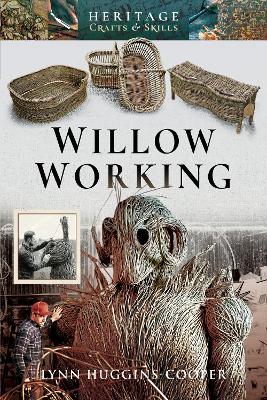Reviewed by annieb123 on
Willow Working is a historical survey and informational guide to working with willow for weaving and sculpture written by Lynn Huggins-Cooper. Due out 30th Sept 2020 from Pen & Sword, it's 176 pages and will be available in paperback format.
This is a book in the Heritage Crafts series of books which cover many subjects such as leatherworking and tanning, dyeing, fibre crafts, felting, and others which are in danger of being lost forever. This book makes a nice addition to the series and provides a surprisingly comprehensive look at forming and using willow to create containers, structural elements, and more.
The first chapters cover basketweaving from ancient times to the modern day. With such a massive timeline, the coverage is brief for each time period, but provides a lot of tantalizing glimpses to follow up later.
The following chapters include interesting information much of which was new-to-me about basketry in folklore and ritual, along with willow woven boats (!!) followed by a final chapter containing interviews with several different individual artisans and collectives. The format provides the same questions to each interviewee and it's interesting to see how they came to their craft from often disparate origins, cultures, and geographical locations but their enthusiasm and respect is shared by all of them.
The photography is sparse and mostly confined to a gallery chapter at the end of the book, but the included pictures are beautifully clear and illustrative. There are no tutorials, but there are a wealth of links provided (slanted toward readers in the UK) in the form of a solid bibliography and links section to stockists and teachers. This would make a superlative library selection for a guild or shop, as well as for the basket-weaver's home library.
This is a good, accessible, clearly written introduction to spinning and weaving.
Four stars.
Disclosure: I received an ARC at no cost from the author/publisher for review purposes.
Reading updates
- Started reading
- 5 September, 2020: Finished reading
- 5 September, 2020: Reviewed
